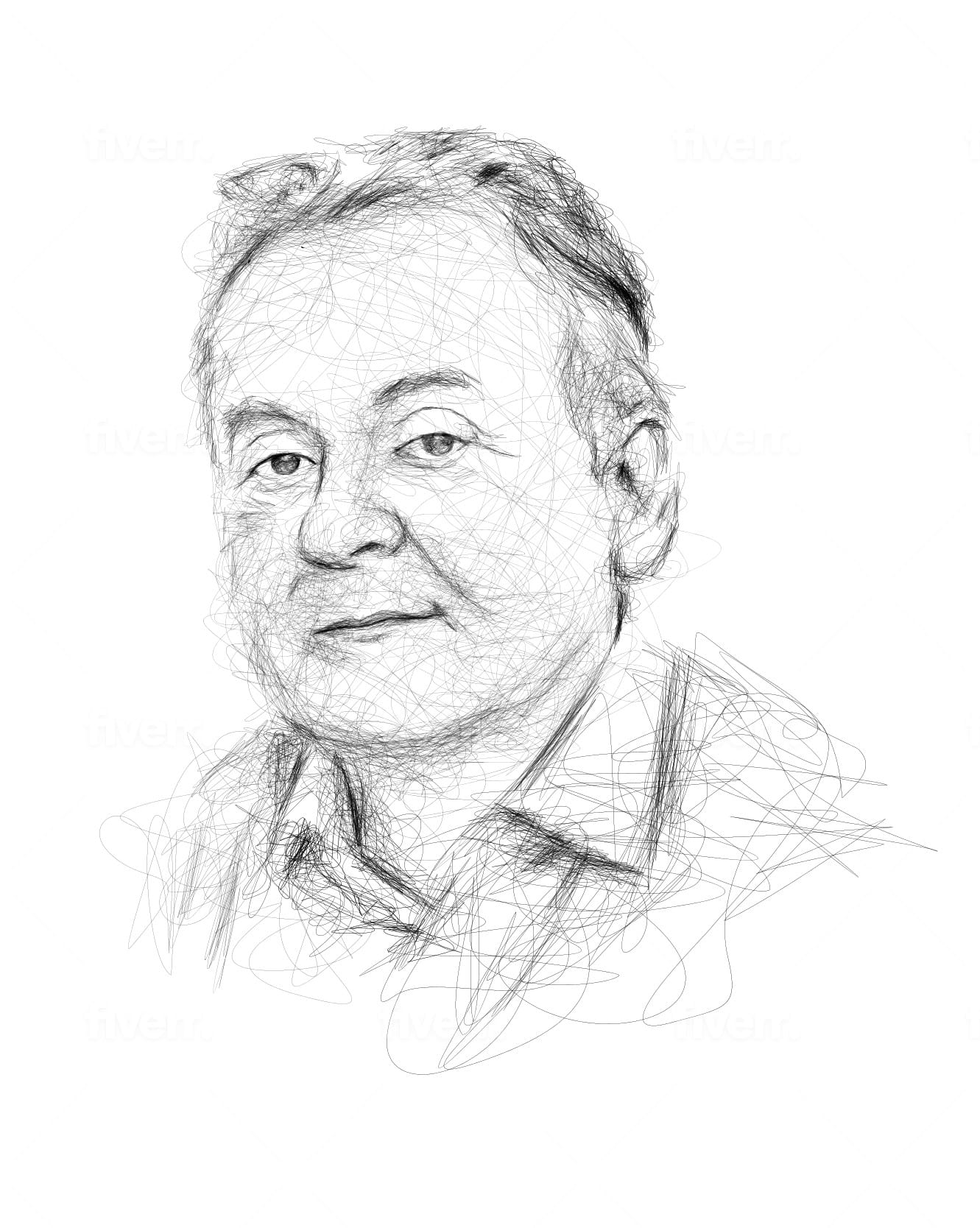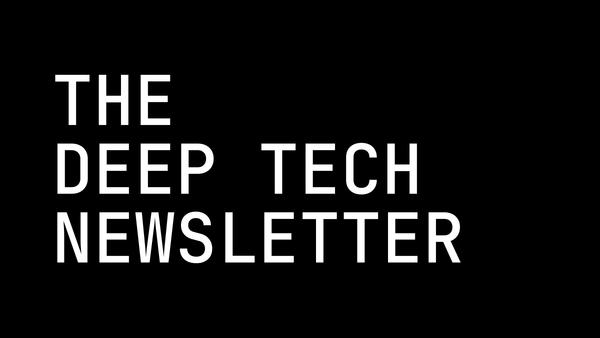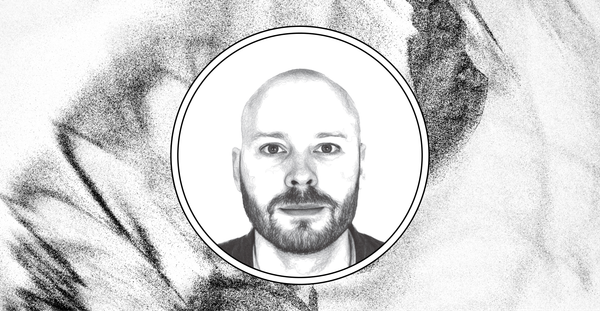AI and the Birth of TechMed with DCVC’s Alan Cohen
Alan Cohen is a general partner at DCVC, a deep tech VC firm backing entrepreneurs using computational approaches to solve trillion-dollar problems.
Alan Cohen is a general partner at DCVC, a deep tech VC firm backing entrepreneurs using computational approaches to solve trillion-dollar problems. At DCVC, Alan focuses on an array of AI-enabled health tech, energy, security, and enterprise opportunities and has led DCVC’s successful exits at Element AI, Evolv, and Caption Health. Prior to DCVC, Alan has been an entrepreneur, technology executive, and board member for a range of iconic companies, including DCVC-backed Illumio, Nicira, Airespace, Cisco, and IBM.

What led you to investing in deep tech with DCVC?
So DCVC is a deep tech venture fund that focuses on trillion dollar problems in our economy and society that can increasingly be addressed through more computational and scientific approaches as opposed to the incrementalism you find in traditional industries. I am actually kind of an accidental tourist in deep tech, meaning I spent my formative years helping build the internet at IBM and Cisco. I went on to do four startups after that as an operating executive in cyber, networking, and enterprise software. But about ten years ago, I realized I was actually bored with traditional enterprise tech, which was mostly about “better, faster, cheaper.” Around that time, I also lost my father to glioblastoma, which was the road to Damascus moment for me. I was like why the hell am I wasting my time teaching salespeople how to enter notes about a meeting into a little cell when there’s diseases that don’t have cures yet? It got me thinking about deep tech.
My partners, Matt Ocko and Zack Bogue, had founded DCVC about 15 years ago and were pre-seed investors in my last company, so I dropped them a note asking if there was anything really challenging in their portfolio that might need my help as a board member or advisor. They introduced me to a couple of companies and ended up joining the board such as Evolv, which uses AI to detect weapons without restricting people’s freedom of movement. That was an amazing experience and shortly after I ended up joining DCVC as an operating partner and moved into a general partner role shortly after.
A lot of VC firms are pivoting into deep tech these days, but DCVC is, in many ways, one of the OGs in this space. What makes DCVC unique as a deep tech investment firm?
It’s funny you say that because I do call Matt Ocko “OG” because he is really one of the original players in deep tech. There are a lot of other great firms that have also been doing this for a while, but Matt and Zack have been around this for decades. The firm got its start by investing in a lot of infrastructure for big data. Zack and some folks started the “Big Data Drinking Club” at Founders Den in San Francisco, which meant they were hanging out with a lot of data nerds and ultimately led to investments in companies like Databricks, Confluent, Elastic and other great data infrastructure companies.. In recent years, they realized that there’s going to be a big shift beyond infrastructure to applying data science to industries. So, rockets, robots, microbes for agriculture, techbio, therapeutics, energy, robotics, water, space, etc—industries that were using tech a lot, but using it more in the back office, systems of records type of way. They weren’t really using it in the production process in the sense of “how do I create a digital twin to enhance the work of lab scientists,” which is what one of our investments—Recursion Pharmaceuticals – leads the industry in.
A great example of what this looks like in practice is Pivot Bio. The company’s founder was the grandson of a Texas corn farmer and realized that nothing on the planet grows without nitrogen, but too much nitrogen burns out the soil, it does horrible things to the water supply, and it’s a huge source of greenhouse gasses in the atmosphere. And given that we’ve had to go from feeding about 2 billion people at the turn of the 20th century to 10 billion people in the years ahead, just throwing more nitrogen fertilizer on the ground isn’t going to work—particularly when the nitrogen element of that fertilizer is available in the soil. So the idea was to figure out how to use microbes to leach it out of the soil, effectively building a microbial Monsanto.
So DCVC works across an array of industries, but they’re all based on the same foundational investment thesis: science and industry meets AI. We also work with a lot of universities, both their endowments and as scientific collaborators, which is a collaboration that makes a lot of sense particularly within deep tech.
Lately you’ve been drilling into a new thesis you’re calling TechMed. What’s the big idea here?
My partners and I have been focused on a thesis we call TechMed. The neologism plays on the idea of TechBio because we saw similar things happening in the medtech industry, namely that computational technologies that started in different industries are now moving into the delivery of healthcare. This is particularly true with medical devices, which are alone a $500 billion industry and that doesn’t include the massive healthcare component that it supports. So people were building slightly better pacemakers or medical implants, but it was clear to us that there was an opportunity to take technologies like computer vision—which we see in a lot of robotics and security applications—and apply them to medicine to augment human techniques.
A great example of this is a company I invested in called Proprio. The easiest way to think about it is like a 3D Google Maps for surgery. It has the ability to use lightfield and other sensors to give surgeons real-time abilities to more accurately perform challenging procedures like spinal deformity correction or tumor removal. You can think of lightfield as a very intense RGB that has far more pixels coming in than any top of the line camera you might encounter: it also tracks the direction of the light, the way lidar supports an autonomous driving application. Proprio built an array of lightfield cameras to provide real time video on a surgery that generates about 500 gigabytes of video data each operation, which is all tagged and categorized.
Two things have happened to make that possible. One, you have all of this computer vision and intensive video. Two, this system has a lot of processing power–you have a high-end Nvidia processor on the device. Ultimately what this enables is the ability to build AI models for surgery to augment surgeons. These surgeons are incredible, but there’s a shortage of 30,000 surgeons in the US alone. So elective procedures take a long time to schedule and the most complex procedures, such as in the spine, take a lot of rework. But with TechMed, we can take technologies like computer vision and apply them to an area of healthcare where they can have incredible impact in terms of improving patient outcomes. It can make a good surgeon into a great surgeon and it will make a great surgeon incredibly more efficient.
So one part of the TechMed thesis is around the application of these computational techniques in healthcare. The other part of it is around the development of “data rivers.” We’ve all heard of data lakes and data moats, but you’re not a real TechMed company unless you have a data river. This means there’s a source—it might be a data lake—but you’re constantly infusing it with patient data, procedural data, medical device data, and improving the algorithm. That’s a huge shift. The worst part of healthcare is that you see your providers so infrequently. If you have an annual check up, a doctor will see you for 15 minutes, take your vitals, listen to your heart for a minute, and then you’ll see them a year later. But the medical industry is going to look a lot different in 20 years in the sense that we’ll be increasingly collecting all this health data about ourselves with wearable and implantable devices for a more constant stream of data that can alert us in real time to health concerns.
It seems like data rivers also enable a sort of accelerated federated learning in the medical context in the sense that every surgeon using a robot benefits from the data produced by every other surgeon using that robot rather than just improving each time they individually do a surgery. Is that the end game here?
I think that’s actually a pretty fair way to think about it. This approach also provides contextual data about the patient because if you were doing a surgery and the patient had other ailments, you’d want to know about it. When a physician checks me out, she might not have much other information about any other possible medical conditions or recent issues that would affect my health. That data is all sitting in silos, so my GP will have to talk to my surgeon, but they might miss correlations, they might not know about something that occurred in my childhood that is causing a medical issue now. A data river, like all great rivers, has a lot of tributaries that can provide very useful information. Rivers also keep flowing over long distances, capturing things and finding patterns of a river over time that can tell you a lot about the patient.
This is how I think we finally get to the quantified self and TechMed takes advantage of that. It also allows the provision of this data. It allows people to collaborate with their peers in different geographies. It allows remote teaching so you could use an AR headset and remotely tie into a Proprio-led surgery, for example. People in AI like to talk about proprietary data sets and foundation models, but data sets, unless they’re constantly replenished or updated, get stale. That’s why we need the data river to actualize this.
What sort of challenges in medicine are a good fit for a TechMed approach?
I think TechMed applications are not any different than any other investable areas. Is there a giant, pressing problem and scarcity at the same time? For example, we clearly don’t have enough medical professionals. We do not have enough nurses. But we have a company—Medical Informatics Corp—in Houston that has built the first machine learning driven patient monitoring systems in hospitals. It will tell you a lot better about how your patient’s doing while they’re in the hospital, which might actually help with discharging and freeing the bed. But it also deals with a giant nursing shortage because it is able to aggregate intelligence from monitoring hundreds of beds in a hospital instead of going from bed to bed. So there’s both scarcity and cost pressure at play here. For the last 20 years, people have been talking about bending the cost curve, but delivery of care has gone the other way. Everything’s gotten more expensive, not less expensive.
The most exciting form of this to me is the birth of an intelligent approach to monitoring and implants. Today, if I screw up my leg, somebody might put some piece of titanium in me to fix it. There’s no processing power on that thing and that’s a huge wasted opportunity. And there are so many opportunities like this in medicine to provide intelligence and data in all these places that are otherwise static. It’s going to change the entire industry.
I mean, the guys in Cupertino basically took something that made calls and turned it into a mobile computer. But underneath it had all the building blocks—a processor, an encryption vault,, a payment mechanism, a GPS chip, a camera—that turned it into the hitchhiker’s guide of the galaxy. So I think this $5 trillion US healthcare industry is going to have a similar iPhone moment. But we haven’t even scratched the surface yet.
Ultimately the problem is that when a health issue becomes acute, it becomes very expensive to treat it and that expense creates scarcity. So I think the ability to pull in data into the medical industry will create abundance and really democratize access to care. It could actually reduce the cost curve and change our behaviors to make us more healthy, which will improve patient outcomes.
It’s a compelling idea, but the healthcare industry is a notoriously hard one to crack—it’s slow to adopt new technologies out of an abundance of caution and patient data is highly regulated. Does this concern you in terms of how your MedTech thesis will play out?
Well, the medical industry has exactly the same characteristics of any large industry, which is people are nervous in general when doing business with small companies. It’s hard to rely on them if you don’t think they’ll be around in the long run. So, like any other industry, it’s incumbent upon deep tech founding teams to find the people who are so desperate for what you’re building that they’ve either tried to build a version themselves or are actively looking for that solution. You want to walk into a meeting with these people and have them ask you where you’ve been their whole life. And this is where effective communication becomes so important. If you have an undifferentiated message, this isn’t going to work because then you’re just a company at a conference with 200 other arm-waving startups. You’re not trying to capture 97% of potential buyers on day one, you’re trying to get to the 3% who really get it and have invested their own personal time and resources into trying to build what you’re building. People don’t like confrontation, but when you bring in a new idea, there’s going to be some confrontation or form of obstacle that founders need to get past to get to those people.
The second part of this is that I think it’s time for the TechMed industry to embrace the FDA and other regulators. I’m actually a big fan of the FDA because I don’t want something that’s going to kill me or injure me or degrade the quality of my life entering the healthcare industry. So you can say regulatory bodies are obstinate and be mad or you could go the extra mile and spend the time educating them. These are very smart, dedicated folks who have a strong mandate to not allow things into our society that injure people. So if you really want to build your industry, instead of calling people Luddites ask yourself how can you work with them? We’re just in the beginning wave and I think we’re going to see a lot of industries embracing the regulators and learning to collaborate with them.
HAUS specializes in public relations and creative services for deep tech startups.




